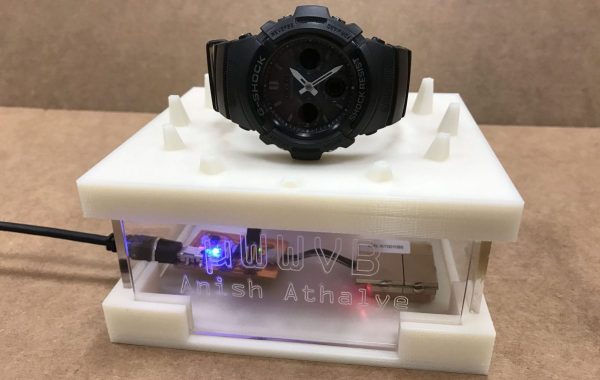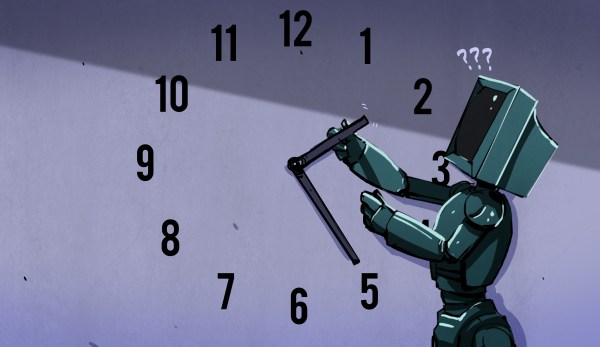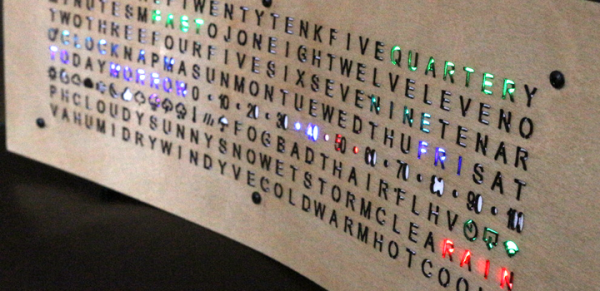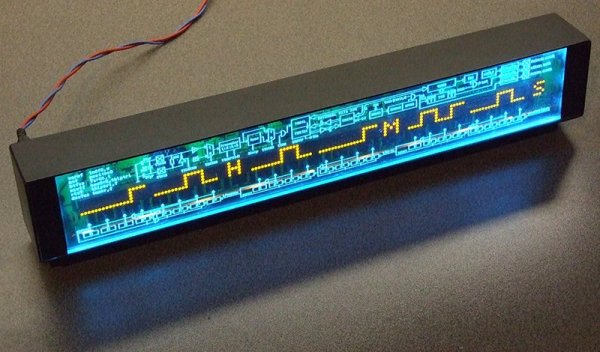The US National Institute of Standards and Technology (NIST) broadcasts atomic clock time signals from Fort Collins, Colorado on various frequencies. The WWVB signal on 60 kHz blasts out 70,000 watts that theoretically should reach the entire continental US. Unfortunately for [Anish Athalye], the signals do not reach his Massachusetts dorm, so he built this GPS to WWVB converter to keep his Casio G-Shock self-setting watch on track.
Not a repeater but a micro-WWVB transmitter, [Anish]’s build consists of a GPS receiver module and an ultra low-power 60kHz transmitter based on an ATtiny44a microcontroller’s hardware PWM driving a ferrite rod antenna. It’s not much of a transmitter, but it doesn’t need to be since the watch is only a few inches away. That also serves to keep the build in compliance with FCC regulations regarding low-power transmissions. Heavy wizardry is invoked by the software needed to pull time data off the GPS module and convert it to WWVB time code format, with the necessary time zone and Daylight Savings Time corrections. Housed in an attractive case, the watch stand takes about three minutes to sync the watch every night.
[Anish] offers some ideas for improving the accuracy, but we think he did just fine with this build. We covered a WWVB signal spoofer before, but this build is far more polished and practical.


















